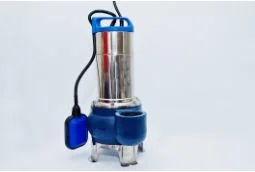Choosing the right submersible pump for your fountain is an important decision. It can significantly affect its performance and longevity.
Whether you’re designing a serene backyard oasis or a majestic centerpiece for a public space. Several essential factors must be carefully considered to ensure optimal performance and durability.
This guide will discuss important aspects to consider when choosing a fountain submersible pump. This will empower you to make an informed choice that meets your needs and preferences.
Why is it important to choose a submersible pump?
Choosing a submersible pump is vital because:
- Efficient Water Movement: It helps move water well for draining or watering plants.
- Space-Saving: Putting the pump underwater saves room, unlike pumps outside.
- Reduced Noise: Operates underwater, minimizing noise pollution.
- Prevents Pump Cavitation: When something is underwater, it stops air bubbles from harming the pump.
- Less Overheating: Going underwater helps cool down, making it less likely to get too hot.
- Versatile Usage: Good for many different uses, like homes or factories.
Maximizing Performance While Minimizing Energy
If you want to save power, get a fountain submersible pump. It helps you save money and help the environment. These pumps use less energy, which is good for your wallet and the planet.
Modern motors, like brushless DC motors, work better than older ones. They save energy and let you control power more precisely.
Submersible pumps with variable speed control are good for fountains. They can be set to work at a speed that matches the fountain’s needs, which helps save energy.
1. Choose an Energy-Efficient Pump
2. Right Size Your Pump
3. Variable Speed Pumps
4. Optimize Pump Placement
5. Regular Maintenance
6. Use Timers or Sensors
Durability And Corrosion Resistance
Water pumps can be damaged by rust and other harmful substances. So, getting a good-quality pump made from solid materials is essential to ensure it lasts a long time and works well. Stainless steel pumps are rugged and don’t rust easily, so they’re great for fresh and saltwater.
If the water contains a lot of salt or chemicals, pumps made from special strong plastics are cheaper and still work well.
Also, some pumps have extra seals and coatings to protect them from damage from rust and other factors, making them last even longer.
When choosing a pump for underwater use, consider the kind of water it will be in and pick one that’s built to handle it so it will keep working well for many years.
Flow Rate And Head Height
A submersible pump’s speed and how high it pumps water are essential for how well it works with a fountain’s design and performs.
The pump’s speed, measured in gallons per hour (GPH) or liters per hour (LPH), determines how much water it moves in a certain amount of time.
Getting a pump with the right speed for your fountain’s design ensures enough water flows for fountains, waterfalls, and jets.
Speed and height are critical considerations when choosing a submersible pump for your fountain.
1. Flow Rate (GPH)
The flow rate tells you how fast the pump moves water in your fountain, measured in Gallons Per Hour (GPH). Picking the proper flow rate depends on your fountain’s size and appearance.
More enormous fountains or ones with many levels usually need a higher flow rate to ensure water moves around well and looks nice.
2. Head Height
Head height means how high the pump can push water up. Choosing a pump that can push water high enough to reach all parts of your fountain, especially if it has high parts or more than one level, is essential.
To determine how high the pump needs to push water, measure from the reservoir’s surface to the highest part of your fountain.
Noise Level And Vibration: Enhancing The Tranquility Of Your Fountain Experience
Using a pump that doesn’t make much noise or vibrations is essential to make a peaceful fountain. Too much noise and shaking can ruin the calm feeling and make the fountain less friendly.
When picking a pump, look for one that is quiet. These pumps might have unique covers, sturdy mounts, or better designs.
Also, choose a pump where you can change how much water comes out. This helps make less noise but keeps the fountain looking good.
Before you buy, check out what other people say about the pump’s noise. This can help you find one that’s quiet like you want.
If you pick a pump that reduces noise and shaking, your fountain will be a peaceful place where everyone can relax and enjoy themselves.
Maintenance Requirements And Accessibility
It is important to make sure your fountain pump is easy to reach for maintenance to keep it working well for a long time.
Choose pumps that are easy to disassemble without tools, have ports you can quickly access, and have clear maintenance instructions. This will make installing and fixing them more accessible.
Pick a pump where you can easily find replacement parts and get help from the manufacturer if you need to fix it quickly.
Think about getting pumps that have built-in features like self-cleaning and filters to remove dirt. This will help you avoid doing a lot of maintenance and make your pump last longer.
Choose pumps that are easy to maintain and reach. This will ensure your fountain keeps working well for a long time without much fixing and won’t cost you much to maintain.
Conclusion
You need to think about a few things to pick the best pump for your fountain. These include how much power it uses, how long it lasts, how much water it moves, and how often you must look after it.
Whether starting a new fountain or improving one you already have, this guide will help you choose. That way, you can enjoy your outdoor fountain for years to come.

